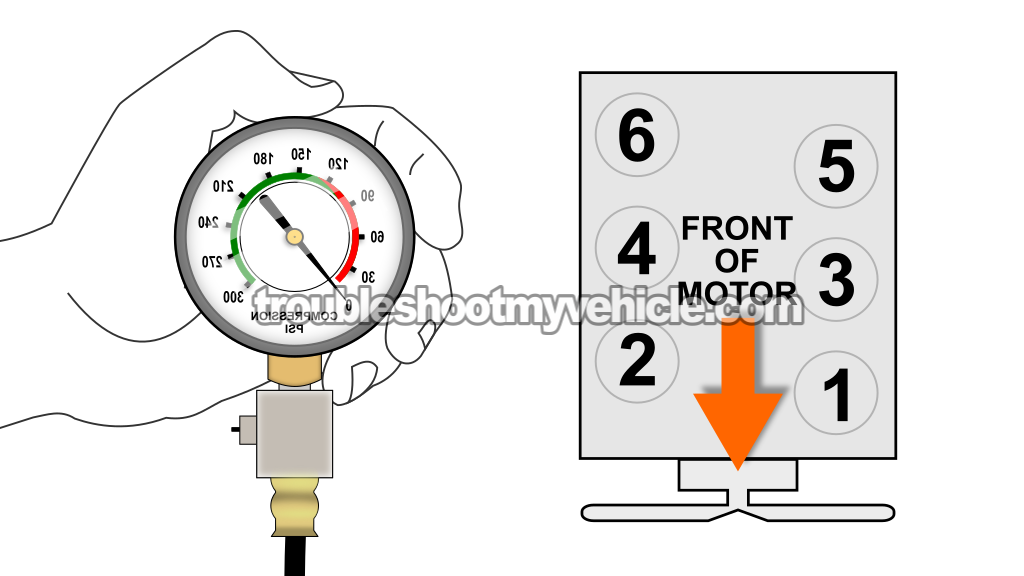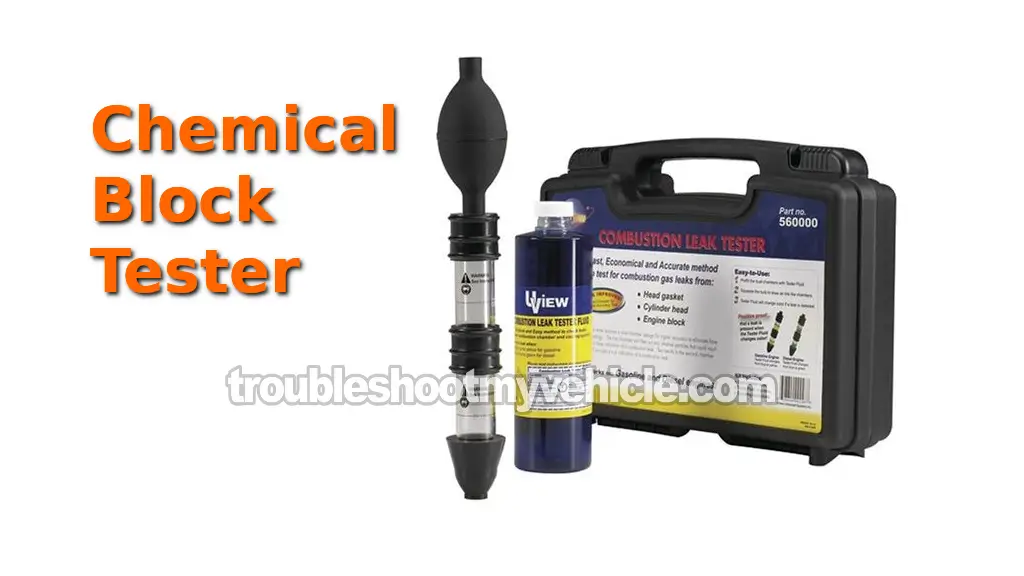TEST 3: Cylinder Compression Test

In some cases, the head gasket burns in a spot right between two side-by-side cylinders (you can see an example of this type of problem in the image at the very beginning of this tutorial).
In this cases, the engine usually starts and runs, but it runs with a misfire (or extreme rough idle).
The best way to diagnose this type of head gasket failure is with a compression test.
NOTE: You can find a more detailed explanation of how to do the compression test and how to interpret its results in this tutorial: How To Test The Engine Compression (1989-2001 3.9L V6 Dodge Ram Pickup).
OK, these are the test steps:
- 1
Disable the ignition system on your 3.9L V6 Dodge pickup.
You can easily accomplish this by disconnecting the ignition coil's electrical connector. - 2
Disable the fuel system.
You can do this by disconnecting the fuel injectors' electrical connectors. - 3
Disconnect all spark plug wires (from their spark plugs)
NOTE: Before you disconnect them, label them with their cylinder number. - 4
Remove all of the spark plugs.
- 5
Thread in the compression tester by hand on the first spark plug hole you're gonna' start with.
Do not use any tools to tighten the compression tester. Hand tightening the compression tester is more than enough to get the proper results. - 6
Have a helper crank the engine as you observe the compression tester.
- 7
At the point the gauge's needle stops climbing, have your assistant stop cranking the engine.
- 8
Write down the reading and what cylinder it belongs to (you can use the illustration above to help you identify the cylinder) on a piece of paper.
- 9
Remove the compression tester and repeat the above steps in the remaining cylinders.
OK, let's take a look at what your results mean:
CASE 1: All cylinder compression readings where normal. This is the correct test result and it confirms that both head gaskets are OK (not burned at a spot between two side-by-side cylinders).
If you still suspect a blown head gasket, go to: TEST 4: Using A Chemical Block Tester (Combustion Leak Tester).
CASE 2: Two side by side cylinders had 0 PSI compression. This engine compression reading confirms that the head gasket is burned thru' at the point between those two cylinders. You'll need to replace the head gasket.
TEST 4: Using A Chemical Block Tester (Combustion Leak Tester)

A blown head gasket can cause the engine to overheat within minutes of it starting but it won't present any of the other symptoms the previous 3 tests were checking for.
The only way to confirm that the problem is being caused by a blown head gasket is by doing a block test with a block tester.
A block test is another name for a combustion leak detector test. And let me tell you, that a block test is the best way to find out if the head gasket is blown or not in those cases that the previous 3 tests cannot confirm or disprove a blown head gasket.
This is how this test works:
- A blue liquid chemical, which is blue in color, is placed in the tester (see photo above).
- The tester assembly is then placed on the open radiator neck (you may have to drain some of the coolant in the radiator since this tool needs to ‘gulp’ some of the air inside the radiator).
- The engine is cranked and started.
- The rubber bellow is then squeezed to suck in the air up through the two fluid-filled chambers. As the air bubbles up through the fluid, it will cause a chemical reaction.
- If the blue chemical turns yellow (for gasoline engines), combustion gases are entering the radiator. This result confirms a head gasket failure, a cracked block, or a cracked cylinder head issue.
- If the blue chemical doesn't change color, you can conclude that you don't have a head gasket failure, a cracked block, or a cracked cylinder head issue.
You can shop for a block tester here:
Disclosure: As an Amazon Associate, I earn from qualifying purchases. If my tutorials help you, using these links is an easy way to support the site at no extra cost to you. Thank you!
More 3.9L V6 Dodge Ram Pickup Tutorials
I've written quite a few 3.9L V6 Dodge Ram pickup 'how to test' tutorials. You can find them in this index:
Here's a sample of the tutorials you'll find in the index:
- How To Test The Engine Compression (1989-2001 3.9L V6 Dodge Ram Pickup).
- How To Test The Fuel Pump (1992-2001 3.9L V6 Dodge Ram Pickup).
- How To Test The TPS (1992-1996 3.9L V6 Dodge Ram Pickup).
- How To Test The MAP Sensor (1992-1996 3.9L V6 Dodge Ram Pickup).

If this info saved the day, buy me a beer!




